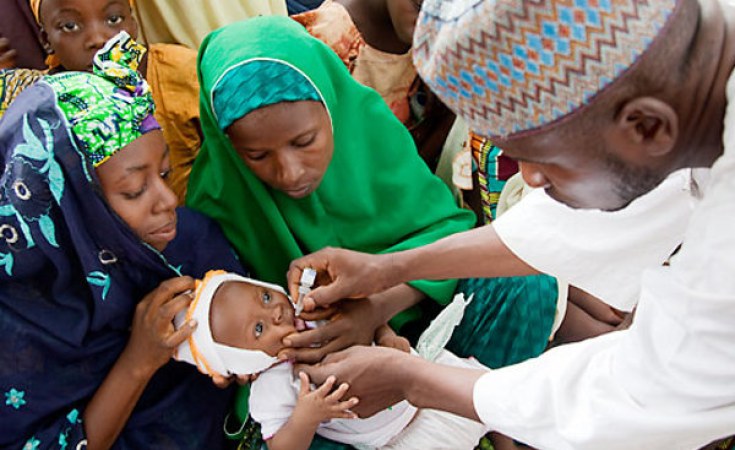As the global community marks World Polio Day on Thursday, recent events show there is both cause for celebration and concern.
There have been 296 cases of polio caused by the "wild type" virus so far this year, compared to 171 cases during the same period last year, according to the Global Polio Eradication Initiative, a public-private partnership spearheaded by the World Health Organisation (WHO). However, only 99 of this year's cases have been in polio-endemic countries, compared to 166 last year.
This difference is significant because fewer polio cases in endemic countries means the battle against the virus in those nations is succeeding. Polio outbreaks in other countries originate in the endemic ones – Nigeria, Pakistan and Afghanistan.
"Progress in the three remaining polio-endemic countries has continued since 2012," said Dr. Hamid Jafari, director of the initiative. "That was the year when the fewest number of cases was reported from the fewest number of countries.
"That progress has continued into 2013, and the highlight of that progress has been that of the two remaining types of polio virus, type 3 has not been seen anywhere in the world since November last year. That's a very, very important element of progress."
On the downside, there has been an increase in transmission of the virus outside of the three remaining endemic countries, most significantly in the Horn of Africa: Kenya, Ethiopia, Somalia and South Sudan.
"These outbreaks will continue to occur as long as we have continued transmission in these endemic reservoir countries," Jafari said.
Polio is highly infectious and mainly affects children under five years of age. One in 200 infections leads to irreversible paralysis. Among those paralysed, five to 10 percent die when their breathing muscles become immobilized.
Polio cases have decreased by more than 99 percent since 1988, from an estimated 350,000 cases then to 223 reported cases in 2012. WHO says the reduction is the result of the global effort to eradicate the disease.
One of the main obstacles to stopping transmission in the three reservoir countries is insecurity.
Nigeria's northeast, where most of the country's polio infections occur, has been in turmoil stemming from Boko Haram Islamist militants, who are suspected of killing nine vaccination workers last February. Nine other vaccination workers were killed in Pakistan in December 2012.
Health experts say the killings have further complicated polio-eradication efforts in those countries, but national programs are adapting to assure that every child is vaccinated. For example, instead of spending a few days doing vaccinations in a particular place, local health workers, in consultation with local security forces, will spend only one day instead to avoid the potential for attack.
When the virus spreads from one insecure country to another, explosive outbreaks are likely to occur. This is what happened in Somalia, an insecure county with fragile health systems, high population movements and many unvaccinated children who are difficult to reach.
"The Horn of Africa outbreak is very unfortunate," said Dr. Jay Wenger, who leads polio eradication efforts within the Global Development Program at the Bill & Melinda Gates Foundation. "It in some ways makes the point that we need to finish the job everywhere in the world or places like these are not safe."
WHO says that as long as a single child remains infected, children in all countries are at risk of contracting polio. Failure to eradicate polio from the remaining endemic countries could result in as many as 200,000 new cases every year, within 10 years, all over the world.
WHO says that as a result of concerted outbreak response efforts in the Horn, the number of newly reported cases from Banadir, Somalia, where the outbreak began, has declined and more children are being reached for vaccination.
"However, more needs to be done, because as many as 500,000 children still remain inaccessible in parts of south-central Somalia, and other areas of the Horn of Africa remain at risk of re-infection," WHO said in its weekly polio report, ending on October 16.
Another obstacle to achieving eradication in endemic countries is local will and effective management of vaccination programs, despite commitment from the highest levels of government.
"These are countries where it's difficult to get coordinated projects to work over an entire country and there has been an enormous amount of effort to improve the management and technical performance of those teams," Wenger said.
One thing that has helped, he said, is the introduction of geographic information system mapping to assure that health workers know where to go instead of using hand-drawn estimates of where people live.
"By using these technologies we have been able to identify villages that were previously missed," Wenger said.


